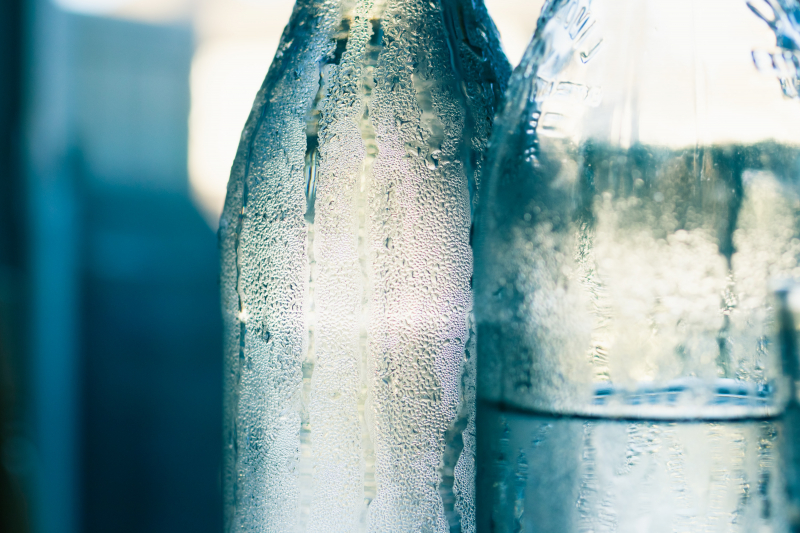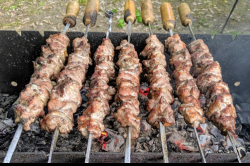The other day, when it was close to 30 degrees Celsius in St. Petersburg, I walked into a grocery store to get some cold sparkling water and was faced with an impossible choice. I was looking at a wall of plastic and glass bottles, some with mountains on their labels, some with numbers, and even one with a deer. None of them looked cold. All looked like an adventure.
To many Russians, buying water means buying “mineral” water. It goes with the general belief that it’s better for you than just regular water, and it’s probably true, especially when compared to what comes out of the tap. There’s also a sense of nostalgia. In the Soviet days, the only water sold came from famous springs mostly in the Caucasus Mountains. It was also fashionable to spend your vacation at a “sanatorium," which is not a mental asylum but a spa where you could supposedly improve your health by drinking water from the local springs. My grandma used to restock her wardrobe specifically for those trips.
Fast forward to today, and you’ll find “stolovaya” (regular drinking) and “lechebnaya” (medicinal) water, which will vary in mineral content and contain from less than 1 g of salt per liter to over 10 g. If you’re playing “water roulette” at the store like I was, you have a good chance of buying something so salty you could use it for brining pickles.
A good starter choice is Нарзан (Narzan) in dark green bottles. It comes from glacier-fed underground lakes by the town of Kislovodsk in the Northern Caucasus and has very mild flavor and natural carbonation. Discovered in the 14th century, it’s called “hero-water” in the local dialect.
Essentuki, a town in the same region, is home to several springs, the most famous being Ессентуки - 4 and Ессентуки - 17. The first one is mild and perfect for that hot summer day, while the second one is seriously salty, as in drink a glass of baking soda and salt solution and stay close to the bathroom. Those looking to experience the full “spectrum of mineralization” can also book themselves into a comfortable resort in Essentuki, open for over a century.
Another famous brand is Borjomi, which comes from the town by the same name in the country of Georgia. These bottles are easy to spot – they feature a fountain, Georgian letters, and a deer. The spring is thought to be discovered by the Imperial Russian army in the 1820’s, and the first bottling plant was built by Mikhail Romanov, the grand duke of the Russian royal family. As far as taste, this water is about a five on the one-to-ten salt scale.
Bottom line: To stay hydrated and to cool down, buy a bottle from the store’s cooler. It’s probably just regular purified carbonated water that’s safe to drink and doesn’t taste like anything special. If you’re adventurous and want to do it like a true Russian, buy a variety of mineral waters off the shelf and have a sampling party.




